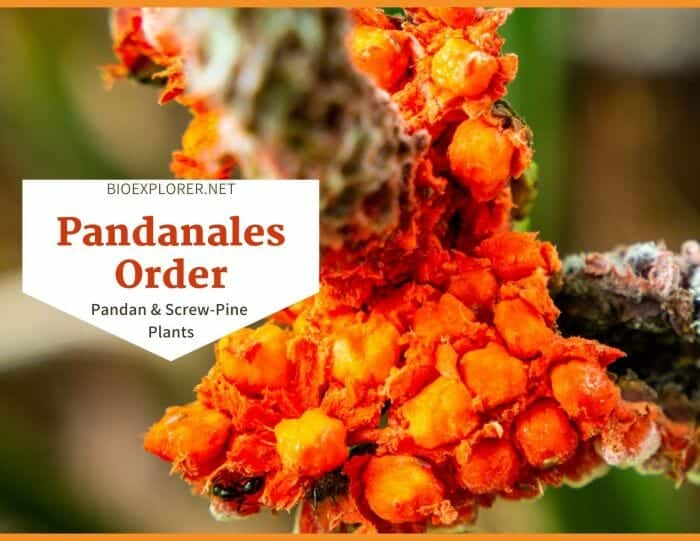
Pandanales, the pandan or screw-pines order of flowering species placed in the monocot clade, range from arborescentWhat is arborescent?Becoming tree-like. plants of tropical coastal areas and rainforests to the forest floor’s twining herbs, lianas, and saprophytic herbs.
The morphology of the flowers in the order of Pandanales is highly variable. The plants in Pandanales can be unisexual or bisexual, and the perianth can be present or absent. Among beneficial species of Padanales are the Panama hat palm and the pandan.
Table of Contents
Pandanales Families
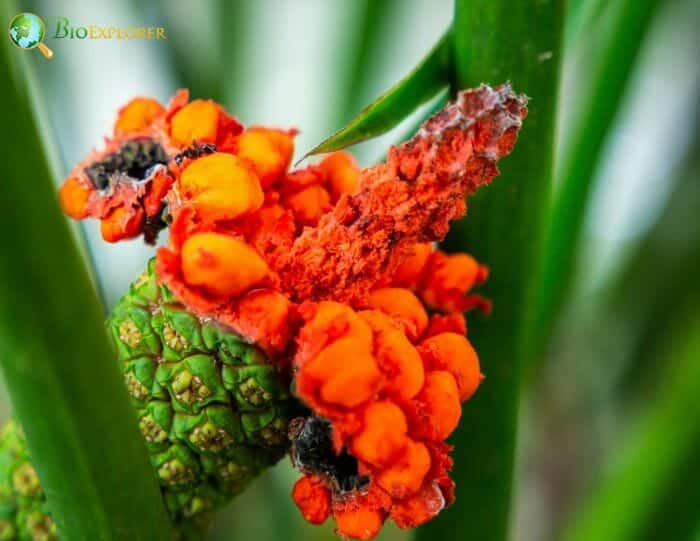
Order Pandanales (36 genera and 1345 species[1]) is in a sister-group relationship with the Dioscoreales in the liliod monocotsWhat is monocots?Angiosperm having only one cotyledon. Cotyledon is seed leaf; the first leaf (or set of leaves) to appear during the early development of a seedling.. This order is made up of 5 families:
- Pandanaceae (Pandan family)
- Cyclanthaceae (Panama hat plant order).
- Triuridaceae
- Stemonaceae
- Velloziaceae (Creeping vellozia family).
There are only a few genera and species in each family. Studies showed that each has long been regarded as being difficult to place in the phylogenetic context[2].
![]()
Pandanales Distribution
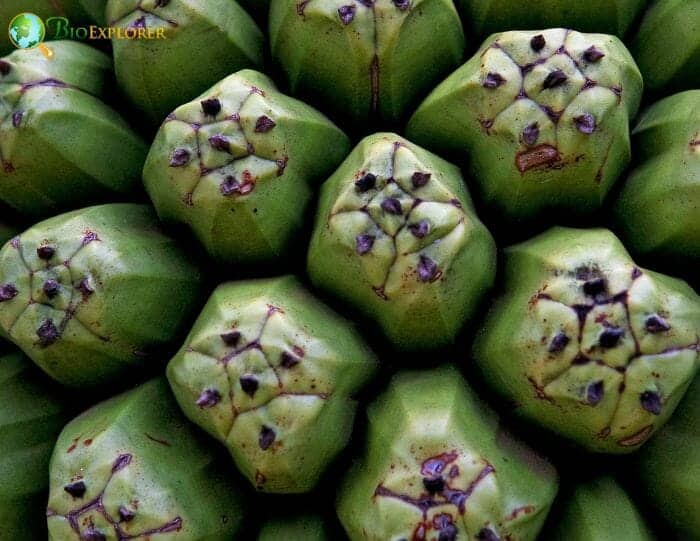
The species of Pandanales range from arborescent plants of the tropical coastal areas and rainforests to the forest floor’s twining herbs, lianas, and saprophytic herbs.
- Family Pandanaceae are distributed in the coastal or marshy areas in the tropics and subtropics of the Old World. They are plentiful in the Malay Archipelago, Melanesia, and Madagascar. Some species are also found in Hawaii, New Zealand, and Southeast Asia (Southern China, Japan).
- Cyclanthaceae, having 225 species[3], is limited to Neotropics (New World tropics). This extends from Mexico through Central America, the West Indies, and South America.
- Two genera of Cyclanthaceae are endemic in Colombia. Family Velloziaceae, on the other hand, are mainly thriving in the drier parts of South America.
- Family Triuridaceae is also distributed in the Neotropics, while Stemonaceae are in areas with seasonal climates across Southeast Asia and tropical Australia. One species of Stemonaceae is thriving in the United States.
![]()
Pandanales Characteristics
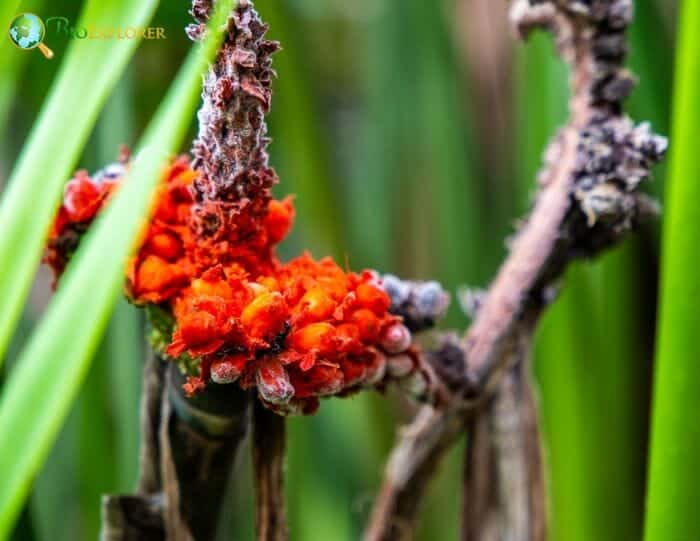
Below are the characteristics of the members belonging to Order Pandanales.
- Plant type: Species are trees, shrubs, vines, or herbaceous plants. They are monocots.
- Roots: The Pandanaceae has adventitious roots that are occasionally branching and function as clasp roots or prop roots. Sometimes, they function as spines or protuberances if they are early aborted.
- Stems: Most species have sympodially branched stems.
- Leaves: The leaves are simple, very long, and narrow. Other species have fan-like (plicate) leaves. Some leaves are small and scalelike.
- Flowers and inflorescences: The Pandanales order has hardly variable and definable floral morphology. The plants possess traits that are not typical compared to other monocot groups. Flowers can be unisexual or bisexual. They have amoeboid anther tapetum.
- Sepals and petals: Pandanaceae lack perianth. Other species possess perianth in valuate tepals.
- Stamens and carpels: Male flowers have numerous stamens. Some flowers are apocarpous (Triuridaceae). Others are monocarpellary (Stemonaceae and Pandanaceae). Both of these characteristics are unusual for monocots.
- Ovary and fruit: Generally, the ovary of the species is superior. Fruit can be a follicle, achene, a drupe, or a capsule.
- Seeds: The seeds are numerous. The embryo can be small or medium. The embryo sac is of polygonum type.
![]()
Pandanales Flowers and Reproduction
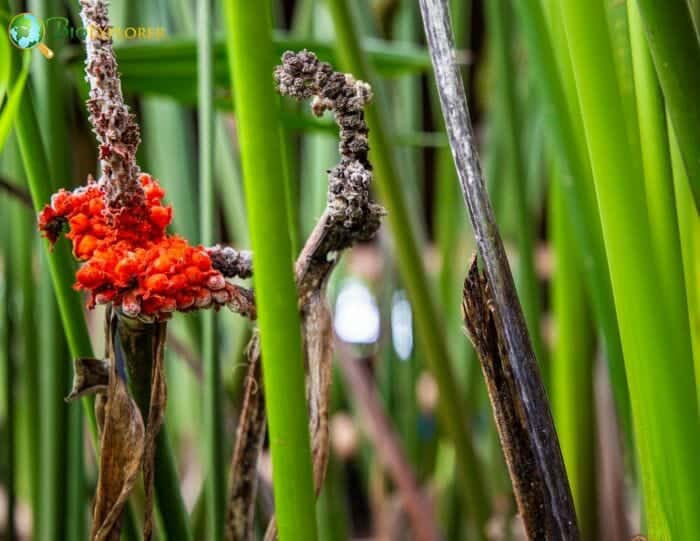
The floral morphology of Pandanales is highly variable, especially in the number of stamens and other structures.
- Pandanaceae flowers display bright colors, and inflorescences can be terminally borne racemes, umbels, spikes, with subtended spathes. They have minute flowers and no perianths. The ovary is superior in the female flowers.
- There are usually many carpels in a ring. Still, occasionally, this is reduced to a row of carpels or a single carpel. The male flowers have numerous stamens. The filaments are either free or fused.
- The inflorescences of Cyclanthaceae flowers are axillary or terminal, unbranched, and pedunculate spadix. They are unisexual and densely crowded in spirally arranged groups (partial inflorescences).
- There is 1 pistillate flower per group surrounded by 4 staminate flowers, or staminate and pistillate units are alternating in cycles (seldom spirals).
- Triuridaceae[4] have terminal bracteateWhat is bracteate?Possessing or bearing bracts. raceme for inflorescence. The flowers are white, yellow, purplish, or red. They are regular, pedicellateWhat is pedicellate?Borne on a pedicel; a flower characterized by having a stalk is also known as pedunculate or pedicellate; opposite is sessile (i.e., no stalk);, and unisexual or bisexual (rare). The perianth comprises of 3-6 valuate tepals in one cycle.
- Pandanaceae involves vertebrate pollination and dioecism[5], with enemophily in Pandanus and entomophilyWhat is entomophily?Pollination by insects. Contrast anemophilous (wind-pollination). in Sararanga. Dioecism is adaptive for the vertebrate-pollinated Freycinatia but has been maladaptive for Pandanus and Sararanga.
- Pollination of Freycinatia by vertebrates like birds and bats is observed in Indonesia, Samoa, Hawaii, and New Zealand. Wind pollination is thought to happen in the genus Pandanus.
- However, pollination by insects and animals also occurs to some degree. This is because the inflorescence enclosed by white to pink spathes emits an odor (P. odoratissimus), attracting pollinators.
Most species of Cyclanthaceae produce a strong scent to attract weevils. The inflorescences also produce heat. Additionally, the colored spathes serve as attractants for pollinators.
The ants visit the fruiting inflorescences, acting as agents of seed dispersal. Water, birds, mammals, and other animals are also involved in the seed dispersal of the riverside species.
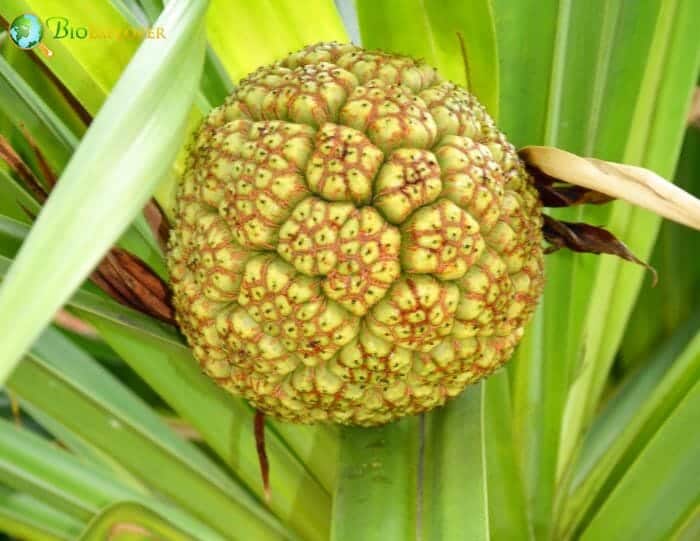
![]()
Pandanales Family Differences
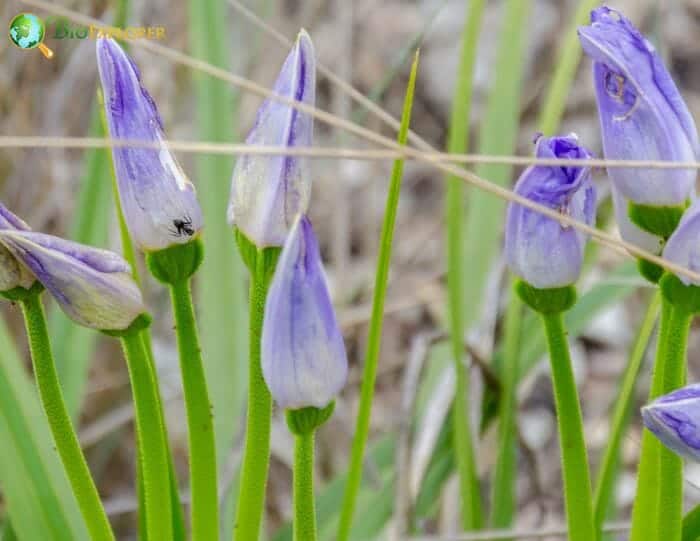
Pandanaceae
- The leaves are simple, very long, and narrow. Rigid and leathery, fibrous spines are found along the leaf margins and midrib. The leaf bases in spiral ranks are pressed together closely. The leaves are alternate and arranged in 3 rows or 4 (Sararanga). The petioles are absent.
- The chlorophyll is present.
- The flowers are strictly unisexual, without perianth. Flowers have one or several carpels. The stigmas are reniform or hippocrepiform.
- The fruit is a drupe (Pandanus) or berry (Freycinetia, Sararanga). The embryo is tiny and straight.
![]()
Cyclanthaceae
- The leaves are fan-like (plicate), arranged in a spiral or rarely distichousWhat is distichous?Two-ranked, with leaves or flowers in two opposite rows in the same plane.. The petioles are present universally and may be long or short.
- Chlorophyll is present.
- The plants are monoeciousWhat is monoecious?Pertaining to plants, individuals of which bear both staminate and pistillate flowers, but not necessarily perfect flowers.. The flowers are in a sessile group of females surrounded by 4 males. The groups are appressed in a spiral from the base to the apex of the spadix. Male flowers have 1 stamen. Female flowers consist of ovaries fused into cycles.
![]()
Triuridaceae
- Triuridaceae leaves are small, scalelike, and few on the stem. Leaves have a triangular to ovate shape.
- The leaves are achlorophyllous.
- The flowers are small and unisexual, having 3 to 10 basally perianth parts in 1 or 2 series. Perianth has 3 or 6 fused stamens.
- The fruit is a follicle or achene. The embryo is small and undifferentiated.
![]()
Stemonaceae
- The leaves have entire blades and petiolate.
- Chlorophyll is present.
- Flowers of this family are usually bisexual, dimerous, or tetramerous. There are 4 tepals, 4 stamens, and 2 carpels.
- The fruit is a thin-walled 2-valved capsule. The embryo is small.
![]()
Velloziaceae
- The leaves are linear with parallel venation; sometimes, spiny leaf margins are present.
- Chlorophyll is present.
- The flowers are trimerous, and sometimes “coronal appendages” are present on the tepals.
- The fruit is a capsule. The embryo is small.
![]()
Pandanales Example Species
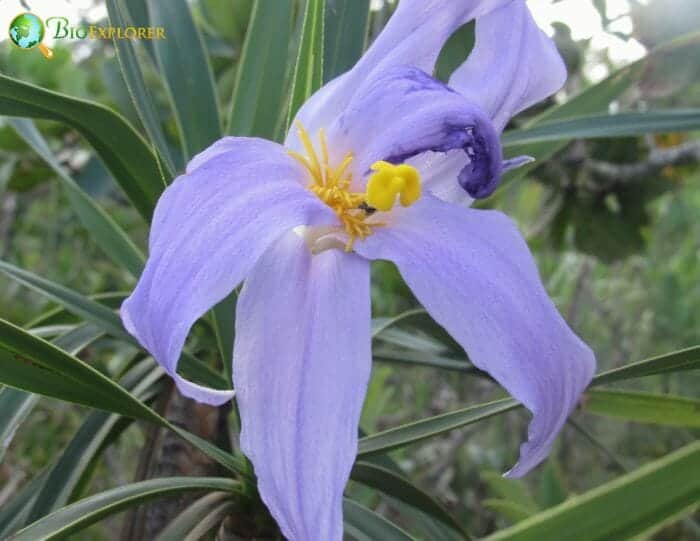
Some members of the Pandanales order are used as ornamental plants, food, food flavorings, and material (leaves) for hat making. Other species are used as medicine[6]. Below are the example species of Pandanales.
- Hala tree
- Rainforest Screw Pine
- Panama Hat Palm
- Paca
- Purple Vellozia
- Creeping vellozia
- Wild Asparagus
- Japanese stemona root
- Sciaphila secundiflora
- Kihansia lovettii
![]()











